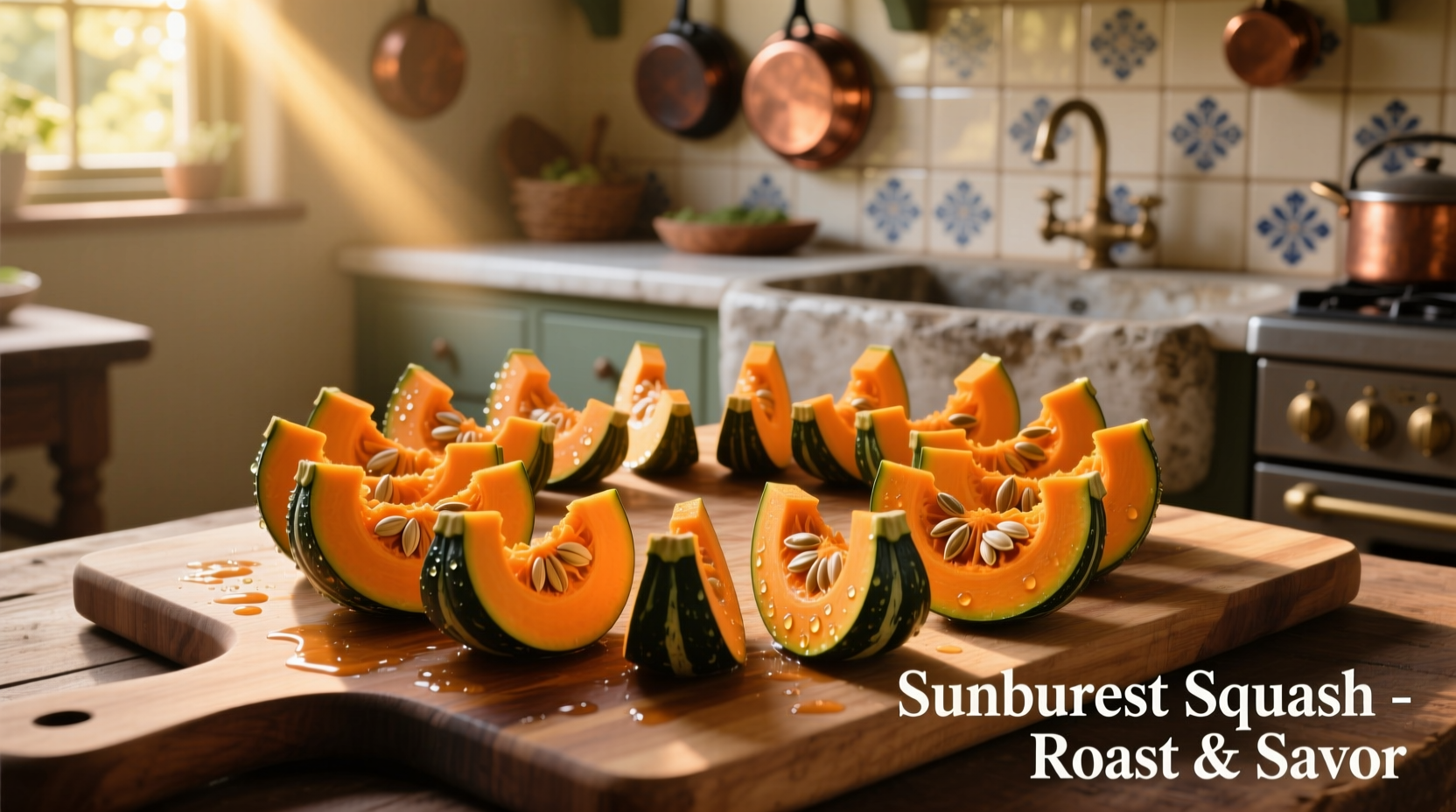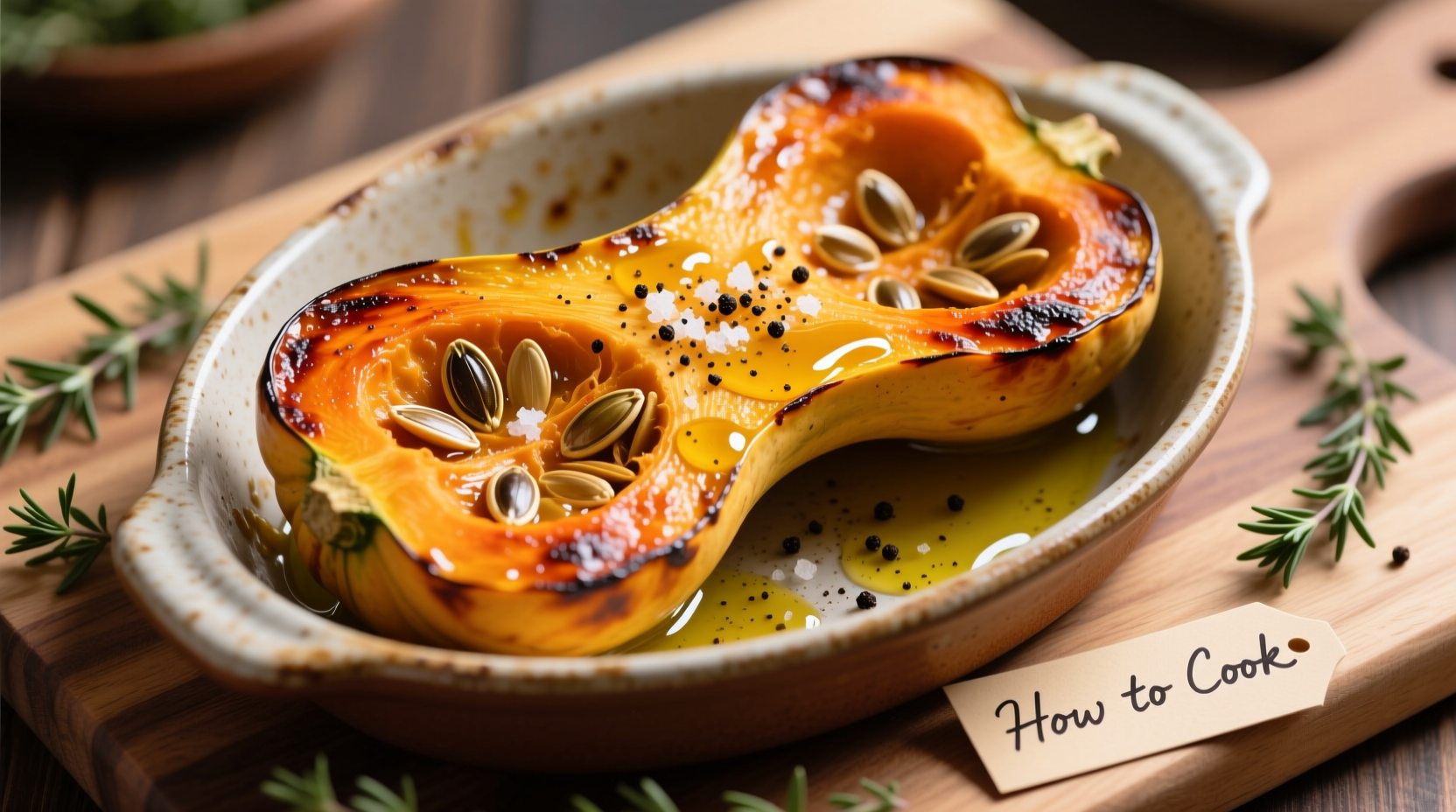Discover exactly how to transform this vibrant summer squash into a delicious side dish or main course component. Sunburst squash—also known as pattypan squash—offers a unique scalloped shape and buttery flavor that elevates any meal when prepared correctly.
What Makes Sunburst Squash Special
Sunburst squash (Cucurbita pepo) stands out with its distinctive scalloped edges and butter-yellow color. Unlike zucchini or yellow squash, this variety maintains its shape beautifully during cooking while developing a subtly sweet, nutty flavor. According to the USDA Agricultural Research Service, sunburst squash contains 16 calories per 100g serving with significant amounts of vitamin C, manganese, and dietary fiber—making it both nutritious and versatile.
| Cooking Method | Time | Temperature | Best For |
|---|---|---|---|
| Roasting | 20-25 minutes | 400°F (200°C) | Caramelized edges, meal prep |
| Sautéing | 8-10 minutes | Medium-high heat | Quick weeknight meals |
| Grilling | 4-5 minutes per side | Medium heat | Summer entertaining |
| Steaming | 6-8 minutes | Boiling water | Preserving nutrients |
Selecting & Storing Sunburst Squash
Choose squash that feel heavy for their size with smooth, unblemished skin. Avoid specimens with soft spots or wrinkled skin, which indicate age. The University of Minnesota Extension recommends selecting smaller squash (2-3 inches in diameter) for the most tender texture and delicate flavor.
Store unwashed squash in a perforated plastic bag in your refrigerator's crisper drawer for up to 5 days. Never wash squash before storage as moisture accelerates spoilage. For optimal flavor, use within 3 days of purchase.

Step-by-Step Preparation Guide
Proper preparation ensures your sunburst squash cooks evenly and develops the best texture:
- Wash thoroughly: Use a soft vegetable brush under cool running water to remove dirt from the scalloped edges
- Trim ends: Cut ¼ inch from both blossom and stem ends
- Slicing technique: For roasting or grilling, slice horizontally into ½-inch thick "steaks". For sautéing, cut vertically into ¼-inch slices or small cubes
- Salting (optional): Sprinkle sliced squash with salt and let sit 10 minutes to draw out excess moisture, then pat dry with paper towels
Four Foolproof Cooking Methods
1. Perfect Roasted Sunburst Squash
This method develops beautiful caramelization while maintaining the squash's distinctive shape:
- Preheat oven to 400°F (200°C)
- Toss squash slices with 1 tbsp olive oil, 1 minced garlic clove, and ½ tsp dried thyme
- Arrange in single layer on parchment-lined baking sheet
- Roast 20-25 minutes until golden brown and fork-tender
- Finish with lemon zest and freshly cracked black pepper
2. Quick Sautéed Sunburst Squash
Ideal for weeknight dinners when time matters:
- Heat 1 tbsp olive oil in large skillet over medium-high heat
- Add squash slices in single layer (work in batches if needed)
- Cook 4-5 minutes per side until golden and tender-crisp
- Add 2 tbsp vegetable broth to create steam for final 2 minutes
- Finish with fresh parsley and a squeeze of lemon juice
3. Grilled Sunburst Squash Steaks
Perfect for summer barbecues with beautiful grill marks:
- Brush squash slices with olive oil and season with salt
- Place directly on preheated grill over medium heat
- Cook 4-5 minutes per side until tender with char marks
- Remove and finish with balsamic glaze and fresh basil
4. Steamed Sunburst Squash
Preserves maximum nutrients for health-conscious cooking:
- Place 1 inch of water in saucepan with steamer basket
- Bring to simmer, add squash slices in single layer
- Cover and steam 6-8 minutes until tender but still slightly firm
- Toss with toasted pine nuts and fresh dill
Flavor Pairings That Shine
Sunburst squash's delicate flavor works with numerous ingredients. The American Culinary Federation recommends these complementary pairings:
- Herbs: Thyme, basil, oregano, dill, chives
- Cheeses: Feta, goat cheese, Parmesan, ricotta
- Proteins: Grilled chicken, shrimp, white beans, chickpeas
- Acids: Lemon juice, balsamic vinegar, apple cider vinegar
- Nuts/Seeds: Pine nuts, pumpkin seeds, walnuts
Avoid These Common Mistakes
Even experienced cooks sometimes miss these critical details when preparing sunburst squash:
- Overcrowding the pan - Causes steaming instead of browning. Always cook in a single layer with space between pieces
- Underseasoning - Squash needs proper salt to enhance its natural sweetness
- Overcooking - Results in mushy texture. Remove squash when still slightly firm as it continues cooking off-heat
- Ignoring size differences - Smaller squash cook faster than larger ones. Adjust cooking time accordingly
Simple Recipe Ideas to Try Tonight
Sunburst Squash & Cherry Tomato Sauté
Cook 2 sliced sunburst squash in olive oil until golden. Add 1 cup cherry tomatoes and 2 minced garlic cloves. Cook 3-4 minutes until tomatoes burst. Finish with fresh basil and crumbled feta.
Roasted Sunburst Squash Salad
Toss roasted squash with mixed greens, toasted pecans, dried cranberries, and a maple-Dijon vinaigrette. Top with goat cheese crumbles.
Sunburst Squash & Shrimp Skewers
Alternate squash slices with shrimp on skewers. Brush with olive oil, garlic, and lemon zest. Grill 8-10 minutes, turning once, until shrimp are opaque.











 浙公网安备
33010002000092号
浙公网安备
33010002000092号 浙B2-20120091-4
浙B2-20120091-4